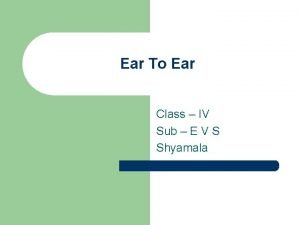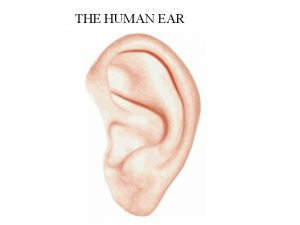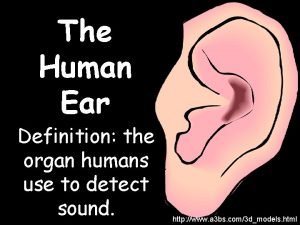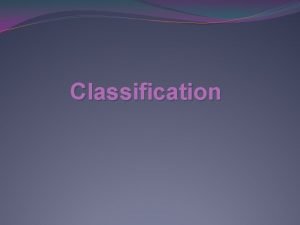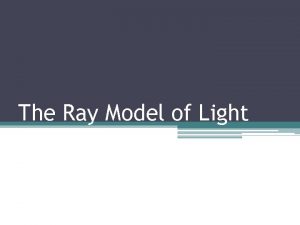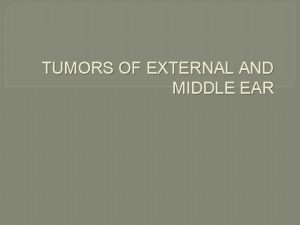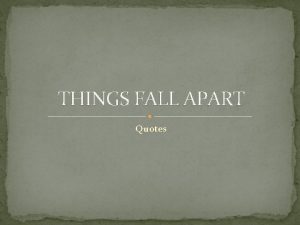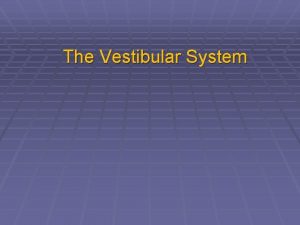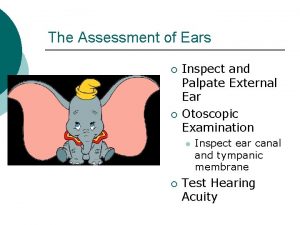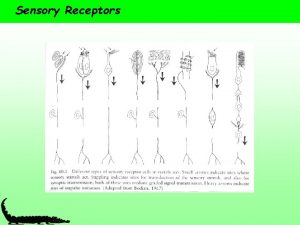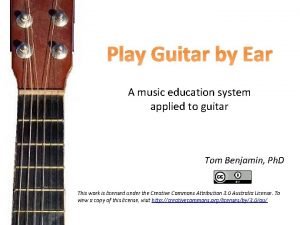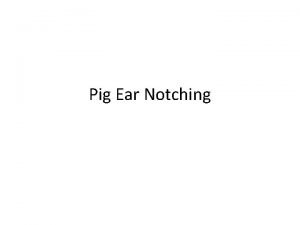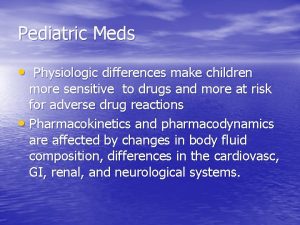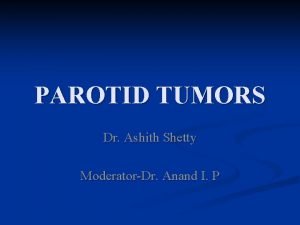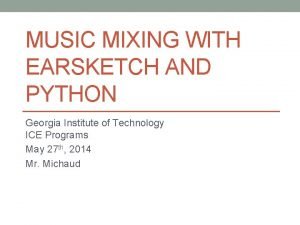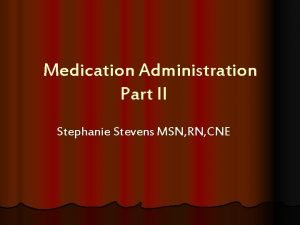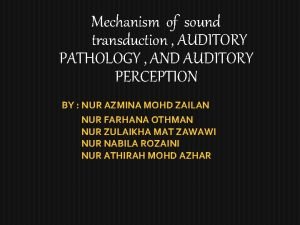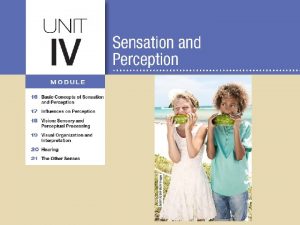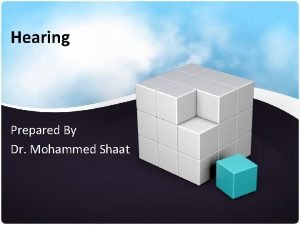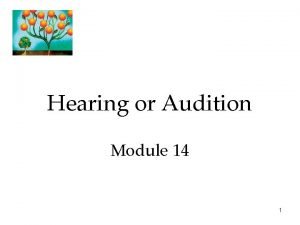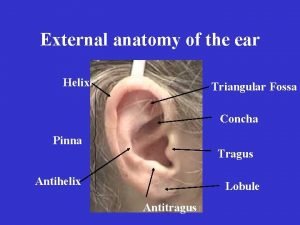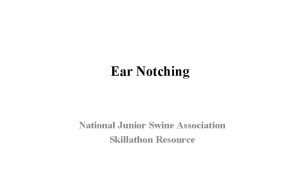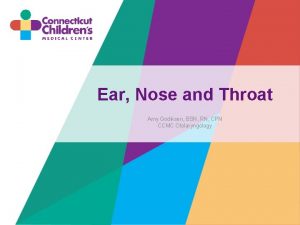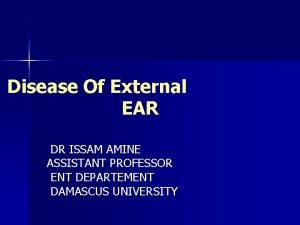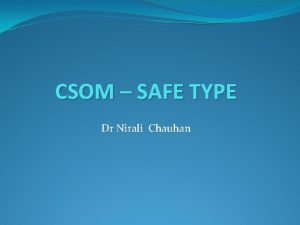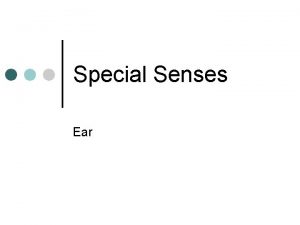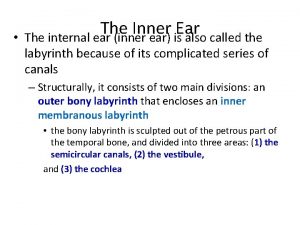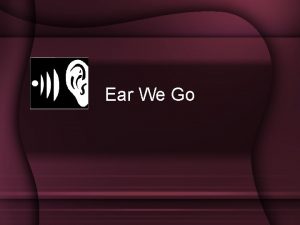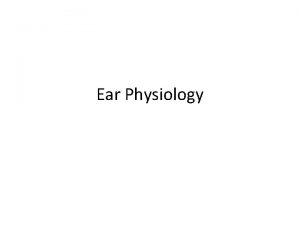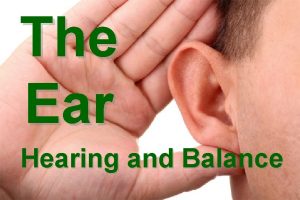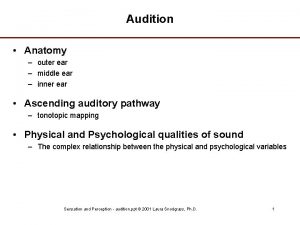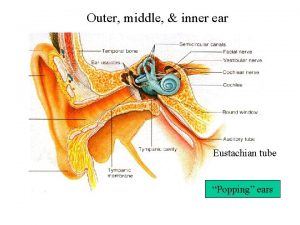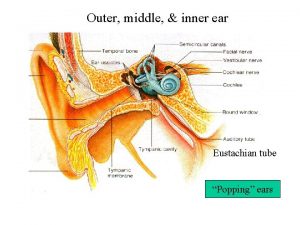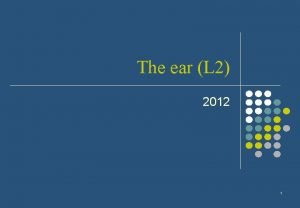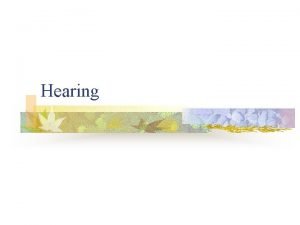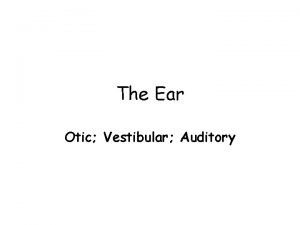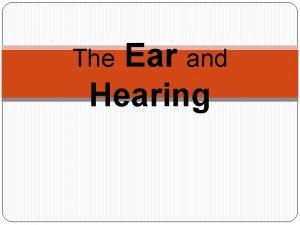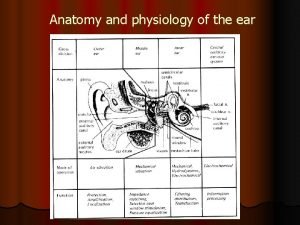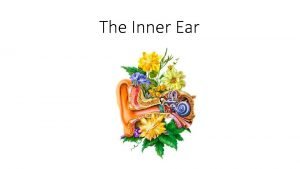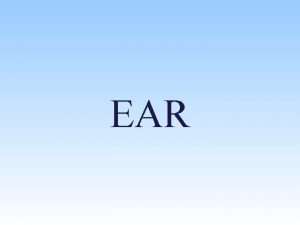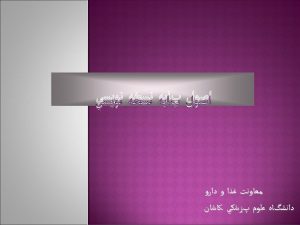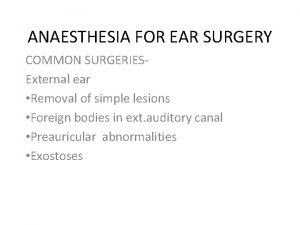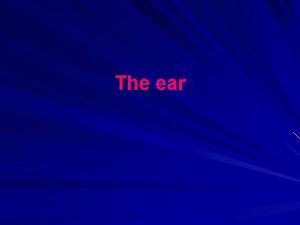The Human Ear Name the structures that make
































































- Slides: 64

The Human Ear

























• Name the structures that make up the outer ear. – Pinna – External Auditory Meatus (Ear Canal) – Tympanic Membrane (Ear Drum)

• What are the ossicles? – The small bones of the ear. – Hammer (Malleus) – Anvil (Incus) – Stirrup (Stapes)

• Name the structures that make up the bony (osseous) labyrinth. – Cochlea – Semicircular Canals – Vestibule

• Which structures are not involved in hearing? They contain the receptors for the sense of ↔. – Semicircular Canals – Vestibule

• Which structure allows pressure in the middle ear to be equalized with Patm? • Auditory Tube (Eustacian Tube)

• This structure vibrates as longitudinal sound waves strike it; then transmits the vibrations to the ossicles. – Tympanic Membrane (Ear Drum)

• Connects the nasopharynx and middle ear – Auditory (Eustacian) Tube

• The structure that transmits vibrations from the stirrup to the fluid in the inner ear. – Oval Window

• The fluid that bathes the sensory receptors of the inner ear. – Endolymph

• The fluid contained within the osseous labyrinth that bathes the membranous labyrinth – Perilymph

• Contains the Organ of Corti – Cochlea



• Identify the major areas of the membranous labyrinth: semicircular canals, saccule, utricle, and cochlear duct

• ID each receptor: Organ of Corti, Crista Ampullaris, Macula

Organ of Corti





Acoustic Macula Otoliths Gelatinous Cap Hair Cells Supporting Cells Vestibular Nerve Axons

Normal Hair Cells

Damaged Hair Cells

• The receptors for ____ ↔ are found in the crista ampullaris of the ____. • These receptors respond to Δs in ____ motion. • When motion begins, the ___ fluid lags behind and the ___ is bent, which excites the hair cells. • When motion stops suddenly, the fluid flows in the opposite dxn and again stimulates the hair cells

• The receptors for ___ ↔ are found in the maculae of the ___ and ___. • These receptors report the position of the head in space. • Tiny stones found in a gel overlying the hair cells roll in response to the pull of ___.

• As they roll, the gel moves and tugs on the hair cells, exciting them. • Besides the ↔ receptors of the inner ear, the sense of ___ and ___ are also important in helping to maintain ↔.

Deafness

Conduction • Can result from the fusion of the ossicles

Sensorineural • Can result from damage to the cochlear nerve

Sensorineural • Sound is heard in one ear but not in the other, during both bone and air conduction

Conduction • Often improved by a hearing aid

Conduction and Sensorineural • Can result from otitis media – an inflammation/infection of the middle ear (the cavity between the eardrum and the inner ear).

Conduction • Can result from XSive earwax or a perforated eardrum

Sensorineural • Can result from a blood clot in the auditory cortex of the brain

Conduction Deafness • hearing loss due to problems with the bones of the middle ear

Sensorineural (Central) Deafness • Hearing loss or impairment due to a lesion or defect of the cochlea or the acoustic nerve.



 An animal with ears like leaves name
An animal with ears like leaves name Animals whose ears cannot see
Animals whose ears cannot see Phân độ lown ngoại tâm thu
Phân độ lown ngoại tâm thu Block nhĩ thất độ 1
Block nhĩ thất độ 1 Thể thơ truyền thống
Thể thơ truyền thống Thơ thất ngôn tứ tuyệt đường luật
Thơ thất ngôn tứ tuyệt đường luật Walmart thất bại ở nhật
Walmart thất bại ở nhật Tìm vết của mặt phẳng
Tìm vết của mặt phẳng Con hãy đưa tay khi thấy người vấp ngã
Con hãy đưa tay khi thấy người vấp ngã Tôn thất thuyết là ai
Tôn thất thuyết là ai Gây tê cơ vuông thắt lưng
Gây tê cơ vuông thắt lưng Sau thất bại ở hồ điển triệt
Sau thất bại ở hồ điển triệt Human ear
Human ear Human ear definition
Human ear definition Homologous structures definition
Homologous structures definition Name
Name Make the lie big make it simple
Make the lie big make it simple Steve angrisano go make a difference
Steve angrisano go make a difference Dawes plan
Dawes plan How to make a pirate name
How to make a pirate name What is classifying
What is classifying Name tent instructions
Name tent instructions Geometric ray model
Geometric ray model Apr vs ear
Apr vs ear Ear
Ear Hình ảnh bộ gõ cơ thể búng tay
Hình ảnh bộ gõ cơ thể búng tay Brown sign ear
Brown sign ear If you don't like my story write your own things fall apart
If you don't like my story write your own things fall apart Ampulla anatomy ear
Ampulla anatomy ear Mastoiditis
Mastoiditis Weber rinne
Weber rinne What are the different types of sensory receptors
What are the different types of sensory receptors Apr vs ear
Apr vs ear A11 chord guitar
A11 chord guitar Pig ears
Pig ears Instilling ear drops in child
Instilling ear drops in child Dr ashith shetty
Dr ashith shetty Slidetodoc
Slidetodoc Earsketch song codes python
Earsketch song codes python Bổ thể
Bổ thể Ear instillation
Ear instillation Z-track method
Z-track method Transduction in the ear
Transduction in the ear Tỉ lệ cơ thể trẻ em
Tỉ lệ cơ thể trẻ em Chó sói
Chó sói Where does transduction occur in the ear
Where does transduction occur in the ear Tư thế worms-breton
Tư thế worms-breton What is reinvestment risk
What is reinvestment risk Auris media anatomy
Auris media anatomy Effective interest rate
Effective interest rate Define ear notching
Define ear notching Phalaenopsis manii
Phalaenopsis manii Hát lên người ơi alleluia
Hát lên người ơi alleluia Ecolima ear
Ecolima ear Pitch in waves
Pitch in waves Các môn thể thao bắt đầu bằng từ đua
Các môn thể thao bắt đầu bằng từ đua Jesus ear cut off
Jesus ear cut off Triangular fossa of ear
Triangular fossa of ear Pig notching worksheet
Pig notching worksheet Ccmc ear nose and throat
Ccmc ear nose and throat Nerve supply of external ear
Nerve supply of external ear Outline of dolphins
Outline of dolphins Intertragal notch pain
Intertragal notch pain Middle ear risk index
Middle ear risk index Thế nào là hệ số cao nhất
Thế nào là hệ số cao nhất

